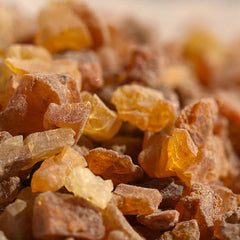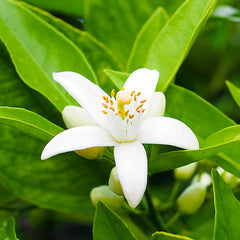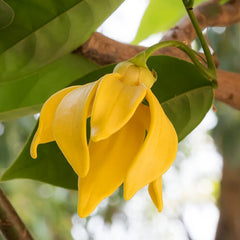Are Gourmand Perfumes Always Sweet?
Click For Affordable Inspired Perfume Alternatives
Gourmand perfumes have surged in popularity over the past decade, captivating fragrance enthusiasts with their rich, edible-inspired scents. Often associated with warmth and comfort, these fragrances evoke the allure of desserts, candies, and delicious treats. However, a common misconception persists: are all gourmand perfumes inherently sweet? The answer is more nuanced than it might seem. In this article, we explore the diverse world of gourmand fragrances and whether sweetness is an essential characteristic of this captivating scent family.
Are Gourmand Perfumes Always Sweet?
Gourmand perfumes are a distinctive category in the world of perfumery, characterized by their edible, mouth-watering qualities. The term “gourmand” originates from the French word for “glutton,” reflecting the sense of indulgence and richness these scents evoke. While many associate gourmand fragrances with sweetness, it's important to understand that this is not an absolute rule. There are nuances and variations within the gourmand category that can surprise even seasoned perfume lovers.
Understanding Gourmand Fragrances
To grasp whether gourmand perfumes are always sweet, one must first understand what defines a gourmand scent. These fragrances typically feature notes that resemble edible delights, such as:
- Vanilla
- Caramel
- Chocolate
- Pralines
- Honey
- Spices like cinnamon and cardamom
These notes create a warm, inviting aura that appeals to the senses. However, the key is that gourmand fragrances are not solely about sweetness; they also encompass a range of textures, intensities, and scent profiles that can be savory, smoky, or even spicy, depending on the composition.
Are All Gourmand Perfumes Sweet? Exploring the Variations
While many gourmand perfumes are indeed sweet, it is a misconception to think that all of them are purely sugary or dessert-like. Here are some ways gourmand fragrances can vary beyond sweetness:
1. Savory Gourmand Fragrances
Some gourmand perfumes emphasize savory or spicy elements rather than overt sweetness. These fragrances evoke the aroma of roasted coffee beans, toasted nuts, or even smokey barbecue, blending richness with depth rather than sugary sweetness. Examples include:
- Fragrances with notes of roasted coffee, tobacco, or spices
- Oud-based gourmand scents with earthy undertones
- Notes of black pepper, cumin, or other spicy elements that add warmth without sweetness
2. Balanced or Subtle Sweetness
Not all gourmand fragrances scream sugary treats. Some are more refined, with a subtle hint of sweetness that complements other notes. These perfumes often focus on a sophisticated balance, making the sweetness less prominent and more integrated into a complex scent profile. For example:
- Light vanilla notes that add warmth without overpowering
- Hints of honey or caramel used sparingly for depth
- Fruity gourmand notes that lean towards fresh or tart rather than sweet
3. Floral and Citrus Gourmand Combinations
Gourmand perfumes can also incorporate floral or citrus elements, which can temper sweetness and add freshness. These combinations create a more nuanced scent that balances the edible qualities with brightness and elegance. Examples include:
- Gourmand fragrances with orange blossom or jasmine
- Scents that combine grapefruit or bergamot with vanilla or cocoa
4. Spicy and Woody Gourmand Scents
Spices and woody notes can dominate gourmand perfumes, shifting the focus away from sweetness. These fragrances evoke warmth and depth, often reminiscent of cozy firesides or exotic markets. Examples include:
- Perfumes with cinnamon, cardamom, or clove paired with woody accords like sandalwood or cedar
- Oud and spice blends with minimal or no sweetness
Examples of Non-Sweet Gourmand Perfumes
Many renowned perfumers have crafted gourmand fragrances that challenge the notion of inherent sweetness. Some notable examples include:
- Serge Lutens’ “Féminité du Bois” – Combines woody, spicy, and leathery notes with a subtle gourmand touch, but not sweet.
- Byredo’s “Black Saffron” – Features saffron, leather, and woody notes, with a slight edible quality but no overt sweetness.
- Tom Ford’s “Oud Wood” – Focuses on oud, spices, and woods, providing a rich but not sweet gourmand experience.
The Role of Personal Preference and Perception
Perception of sweetness in perfumes can be subjective. Factors influencing this perception include:
- Individual taste and scent associations
- Skin chemistry, which can alter how notes develop
- Context and environment in which the perfume is worn
For some, a gourmand fragrance with a hint of vanilla or caramel may feel sweet and comforting, while others may perceive it as warm and spicy without sweetness. This highlights the importance of exploring different formulations to find a scent that aligns with personal preferences.
Conclusion: Are Gourmand Perfumes Always Sweet?
In summary, gourmand perfumes are a diverse family of fragrances inspired by edible delights. While sweetness is a common and prominent feature in many gourmand scents, it is not a defining requirement. The category encompasses a broad spectrum of compositions, including savory, spicy, woody, floral, and citrus-infused fragrances that challenge the notion of inherent sweetness. Whether you prefer a rich, dessert-like scent or a more nuanced, savory aroma, the world of gourmand perfumes offers endless possibilities to explore and enjoy. Ultimately, the beauty of gourmand fragrances lies in their versatility and ability to evoke warmth, comfort, and indulgence in many forms—sweet or otherwise.
Buy Perfumes - Best Online Retailers
Click For Affordable Inspired Perfume Alternatives
Click For The Best Niche Perfumes & Decants
Pheromone Perfumes - Confidence, Attraction & Appeal - Click For More
Home Fragrances & Candle Warmers - Click To Scent Up Your Spaces Today!



